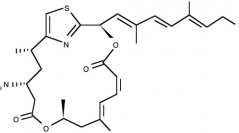

 Zoosystema
22 (2) - Pages 419-431
Zoosystema
22 (2) - Pages 419-431Sponges are able to biosynthesize original secondary metabolites which present promising pharmacological activity especially in cancer chemotherapy. The role played by symbiotic microorganisms in the biosynthesis of sponge secondary metabolites is currently a subject of intensive studies, in the hope that these structurally-complex metabolites may be obtained by biotechnological processes. Some highly cytotoxic, antimicrobial, repellent compounds are found in other marine animals, especially molluscs. Some shell-less molluscs prey on sponges and use these bioactive products for their own defense. This demonstrates the close relationships between marine organisms and the difficulties encountered to find the true producers of marine natural products.
Porifera, antitumour, antiviral, HIV, cytotoxic, antimicrobial, immunosuppressive, anti-inflammatory, associated microorganisms, predator.